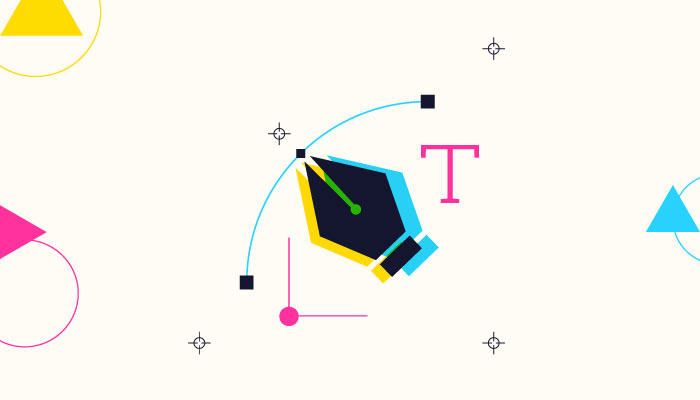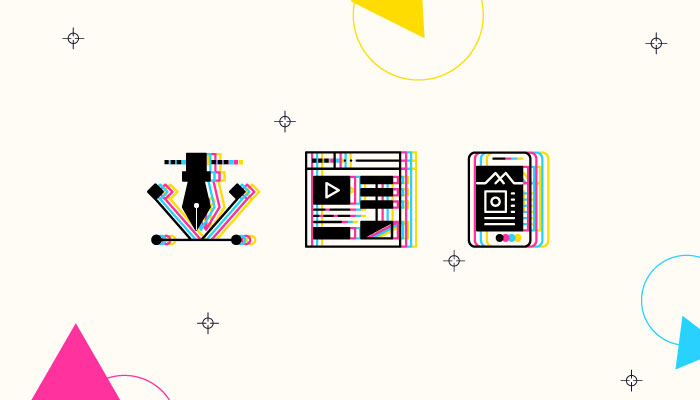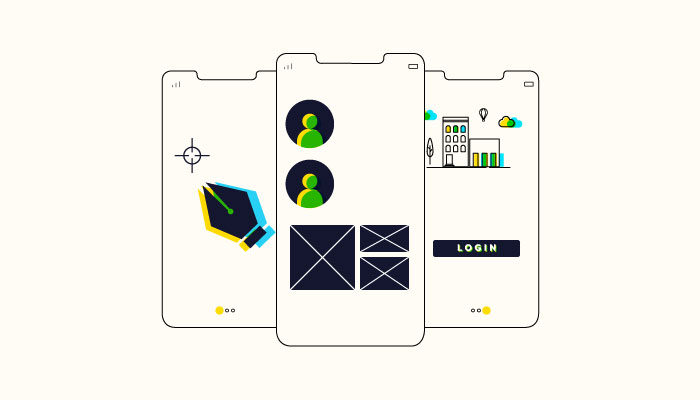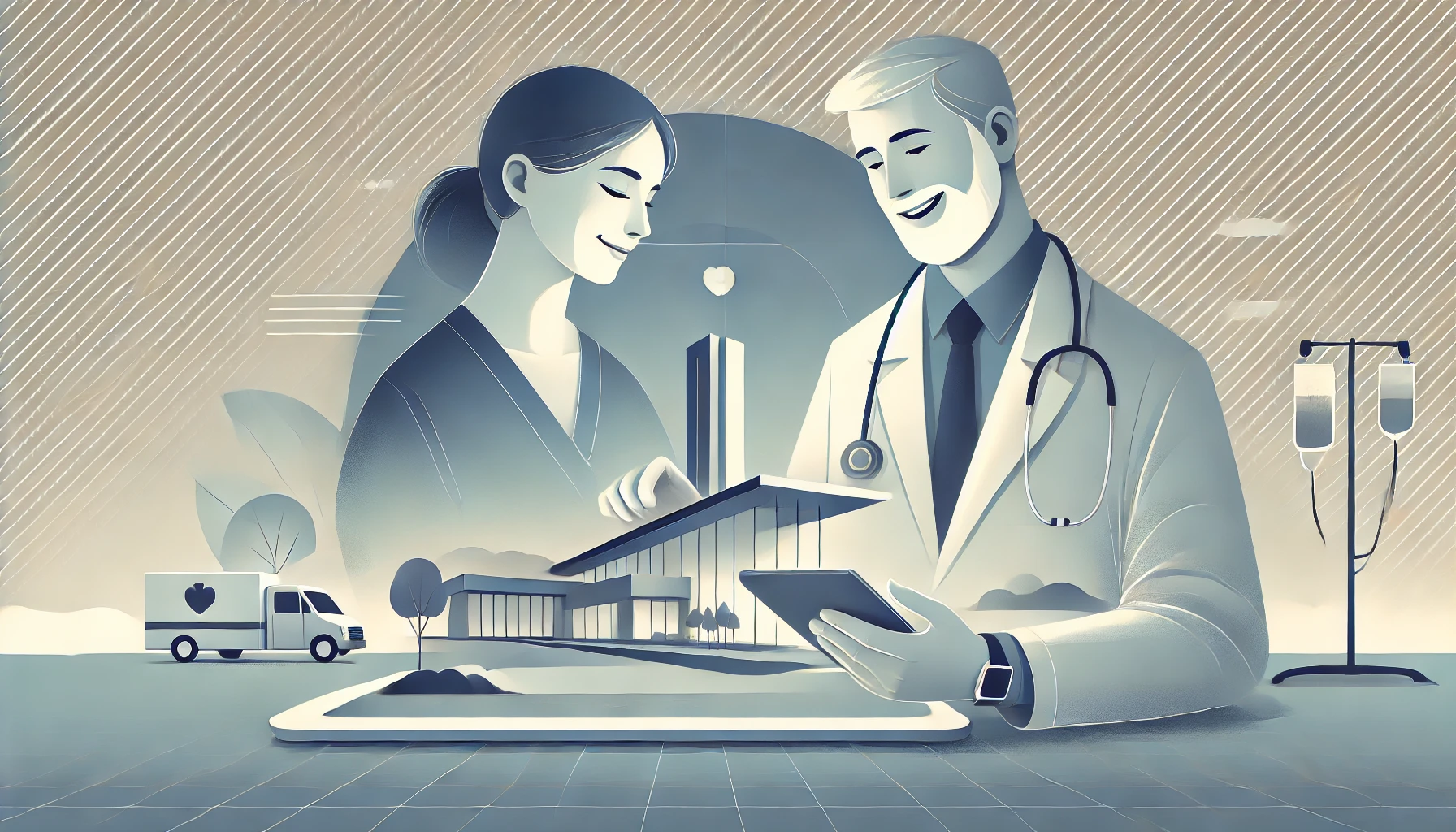What is Graphic Design

Can you quickly think of a logo that caught your attention right away? Or a can of soda that made you put it in the cart just because its look made you feel thirsty in a split-second?
Well, if you have, you are not alone! Every day, we come across countless examples of meticulously placed visual elements that in turn make the entirety of a product look a lot more soothing, while enabling the product to also communicate effortlessly with its users. This is nothing but a result of effective graphic designing involved in the branding process, amongst many other things.
According to the American Institute of Graphic Arts (AIGA), graphic design is defined as – “The art and practice of planning and projecting ideas and experiences with visual and textual content.” In other terms, graphic design communicates certain ideas or messages in a visual way. These visuals can be as simple as a business logo, or as complex as page layouts on a website.
To better understand the meaning of graphic design, it is important to be aware of the elements and principles that make up design. Elements are used in conjunction or opposition with each other to create visually striking and impactful designs. These design elements include color, form, shape, size, space, and texture.
Graphic designers also adhere to the principles of design, which are essentially a set of guidelines that help a design achieve effective composition. The design principles include balance, contrast, emphasis, movement, proportion, rhythm, and hierarchy.
Now that we have understood what graphic designing is, let us understand how it differs from UI and UX design.
Design Elements:
- Graphic Design – This school of design works with a range of design elements, including typography, color, imagery, illustration, layout, and composition. They emphasize the overall aesthetics and visual appeal of the design.
- UI Design – This design process involves work with design elements specific to user interfaces. These include components like icons, forms, menus, sliders, and other interactive elements. They focus on creating consistent and functional designs that facilitate effective user interactions.
- UX Design – A design process that focuses on work with factors such as information architecture, interaction design, usability, and accessibility.

Design Process:
- Graphic Design – The process typically involves understanding the client’s requirements, conducting research, brainstorming, sketching ideas, creating drafts and mockups, and refining the chosen design through iterations.
- UI Design – The process involves user research, user needs, and behavior study, creating wireframes and mockups using visual elements. They provide design assets, style guides, and specifications to assist the development process.
- UX Design – The process involves a more user-centered approach, relying heavily on research and analysis. They prioritize needs, usability, and accessibility to make design decisions. UX designers conduct user research, create wireframes and prototypes, conduct usability tests, and iterate based on user feedback.
So, what role can a graphic designer play?
Before we answer that question, can you guess what is the one common aspect of all successful brands? The answer is a strong “emotional connect” with their target audience.
Successful brands are visually able to tap into the emotional need, be it self-empowerment, making the customer feel confident, or even just tapping into a feel of fun or nostalgia.
Graphic design helps evoke emotions and create a positive emotional connection with the users. Through careful selection of colors, imagery, and visual elements, graphic designers can influence the mood and atmosphere of a product, enhancing user engagement and satisfaction.
Graphic design vis-à-vis UI/UX
Every UI/UX design problem can be distilled into two principal questions.
The first is a functional one – how to make interfaces easier for users to understand and use.
The second component is an emotional one – how to make your audience feel comfortable and heard, how to generate an emotional connect and thereby create brand loyalty.
This is where brand storytelling and visual ability to impart emotions come into play. Understanding emotion and how to control & create it is an indispensable part of great branding, which is an integral part of its success. Graphic designers are trained to recognize, understand, and communicate emotions. Consequently, they possess the ability to deconstruct how colors, typography, and different visual elements can make people feel, and how the combination of these elements can have a calming or provocative effect for the reader.
Some technical aspects on how graphic designing can be helpful in UI/UX design
Graphic design plays a crucial role in UI-UX design by enhancing the visual aspects and overall usability of digital products. Here are the ways graphic design can contribute in the field of UI-UX :
- Visual Hierarchy: Graphic design helps establish a clear visual hierarchy. This helps in guiding user’s attention and help prioritize content. By effectively using typography, color, page layout, it can be ensured that key information stands out, leading to a more intuitive user experience.
- Consistency and Branding: Graphic design helps create a consistent visual identity for a brand or product. Through appropriate use of color, fonts, icons, imagery, etc, a designer maintains a cohesive look and feel across different screens and interactions. Consistency instills a sense of familiarity and trust in users.
- Information Architecture: Graphic design aids in organizing information and content in a way that is easy to comprehend and navigate. By using techniques such as grouping, data visualization, information hierarchy – complex data can be presented in a digestible manner.
- Visual Feedback and Affordance: Graphic design enables the use of visual cues and affordances to provide feedback to users, indicating the actions they can take or the status of an interaction. Well designed buttons, icons, hover effects, and animations offer visual feedback, making the user experience more engaging.
- Accessibility: Graphic design plays a crucial role in ensuring usability and readability. Designers consider factors such as legibility of text, appropriate contrast levels, and optimal line spacing to make sure that the content is easily accessible to all.

Conclusion
In the all-encompassing design ecosystem, graphic design and UI-UX design are two complementary elements which inseparable and intertwined. While UI/UX outlines the functionality and user-centricity of a design, a graphic design provides the visual framework and aesthetics that enhance usability, engagement and overall visual consistency of the design. Therefore, by leveraging the principles of graphic design, UI-UX designers can create interfaces that are visually appealing, intuitive and effective in meeting the user’s needs!







